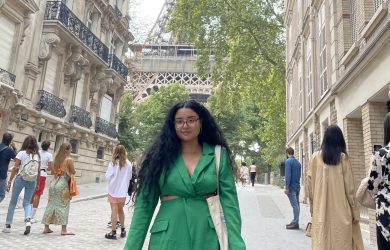Four Gates Cambridge Scholars will discuss research covering hopping insects, fluidised beds, number sculptures and altering animal behaviour at this week's internal symposium.
Hopping insects, fluidised beds, number sculptures and altering animal behaviour will be the subject of this week’s internal symposium.
Four Gates Cambridge Scholars will talk about their research at the symposium in the Gates Cambridge Scholars Common Room on Thursday.
Christopher Boyce [2011] is doing a PhD in Chemical Engineering. He will speak about “The physics and applications of fluidised beds”. The beds are a type of chemical reactor with unique physical properties. They are used in a broad range of industries, from oil and gas to pharmaceuticals. Fluidised beds can also be used to burn coal, natural gas and biomass in such a way that it is more efficient and potentially more cost effective to capture and sequester the carbon dioxide emitted. In fluidised beds, small particles like sand undergo a process called fluidisation, in which they begin to exhibit properties like a liquid. Christopher says: “I have been using magnetic resonance imaging (MRI) and computational modelling to shed light on some of the physics underlying the fluidisation phenomenon, with the expectation that this understanding will enable improvements on the various applications of fluidised beds in industry. My talk will give an introduction to fluidised beds, computational modelling and using MRI in non-medical applications, as well as show some of the key findings from my PhD thus far.
Hanns Hagen Goetzke [2011] is doing a PhD in Zoology. He will talk about his research into how froghoppers and leafhoppers are able to perform explosive jumps from smooth surfaces when other jumping insects slip. He will show how specialised structures on their hind feet enable leafhoppers to successfully jump from smooth surfaces and will briefly discuss possible biomimetic applications.
John Brown’s talk is entitled 666 and all that: A journey into numerology, sculpture, and hyperoctahedral numbers. Starting from a sculpture by Sol LeWitt, John [2012], who is doing a Masters in Pure Mathematics, will talk about discovery in mathematics, discussing along the way the long history of looking for numerical “coincidences” “plus everything you never knew you wanted to know about the number 666”.
Alison Greggor’s presentation discusses how managing animal behaviour can be a useful tool in conservation. Alison [2012] is doing a PhD in Experimental Psychology. She says that all animals occupy a unique cognitive world that is based upon their sensory capacities, attentional inclinations, and learning biases. She adds: “Behaviour results from the interaction of this cognitive world with the environment. As humans dramatically alter habitats on a global scale, we change the environmental cues available for animals to make behavioural decisions. By harnessing animals’ perceptual biases and applying insights from cognitive theory, we can purposefully alter cues to reduce maladaptive responses and shape behaviour. Despite the fundamental connection between cognition and behaviour, cognitive theory is rarely addressed in conservation practice. I will argue that bridging these disciplines is essential for advancing key conservation goals.”
*The symposium will take place from 7-9pm on April 24th and is open to Gates Cambridge Scholars and their guests.












